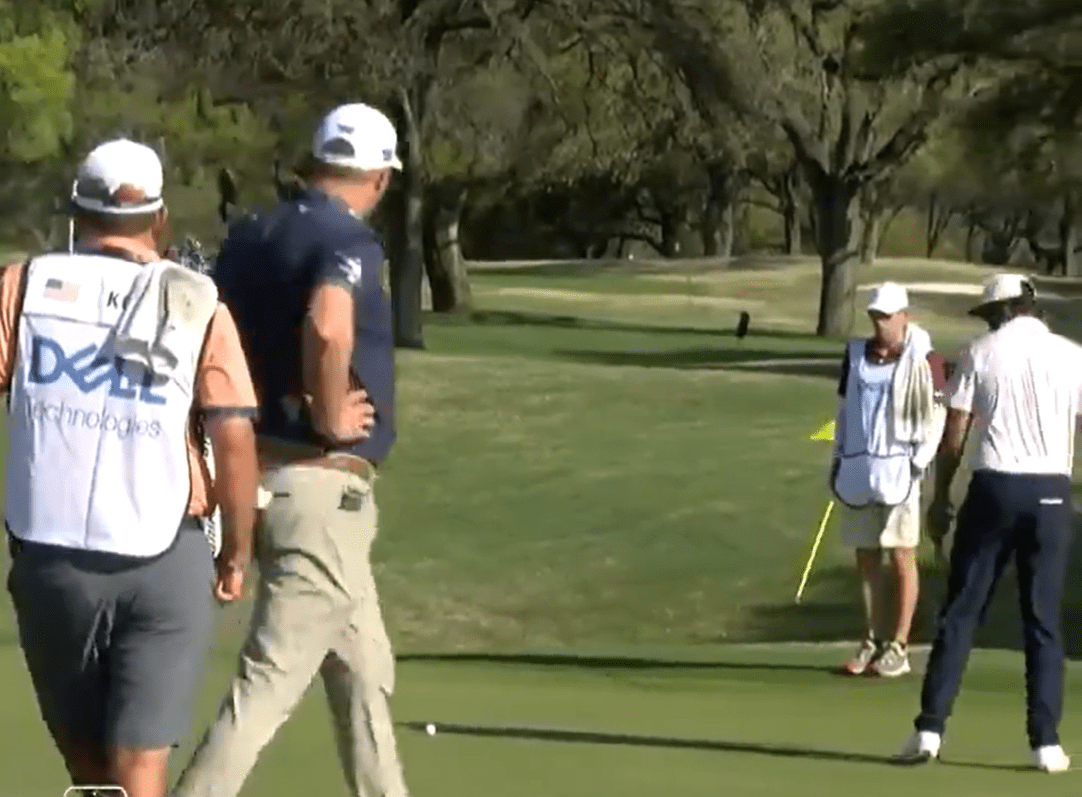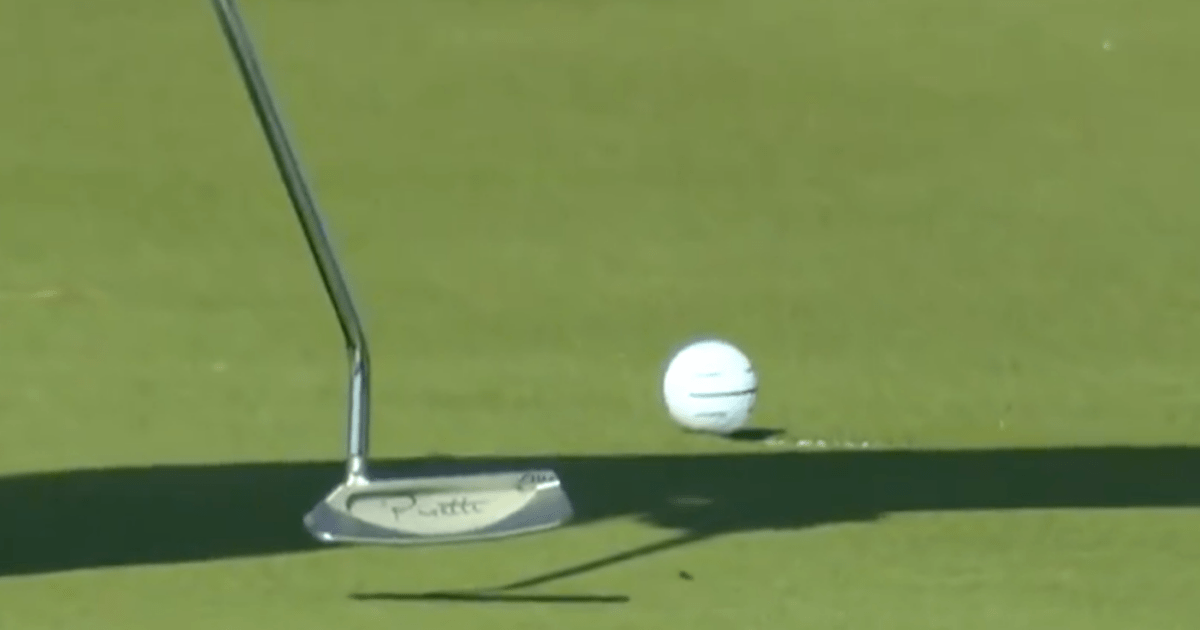What happened?
Footage of Tony Finau holing a putt "with his shadow" re-emerged with an incredible theory explaining the bizarre moment. Finau, now 34, was taking on Jason Kokrak at the World Golf Championships Match Play event in Austin, Texas.
The Shadow Trick
During the match, Finau found himself with a seven-foot-eight-inch putt that he seemingly left agonizingly short. However, after a commentator suggested he put his shadow on the ball, Finau did just that. To everyone's surprise, the ball started moving and rolled in, prompting a wry smile from Finau and an enthusiastic reaction from the commentators.
Reactions and Viral Video
With the video from 2021 going viral on social media again, fans chimed in with their reactions to the rare golfing phenomenon. Reactions ranged from labeling it as witchcraft to the greatest golf hack ever, with many expressing amazement at the trick actually working.
The Rule Book
According to Rule 13.3a in golf, players are allowed to wait ten seconds once they have taken a "reasonable" time to reach the hole to see if the ball will drop in on its own. This rule caused an issue for Si Woo Kim in 2021, who also seemed to try the shadow trick but had to put the extra stroke down in a similar situation.

Finau eventually collected his ball after a bizarre birdie.
Frequently Asked Questions
Is there a specific muscle group that professional golfers target more intensively when training?
Pro golfers train numerous muscle groups with an emphasis on those which directly contribute to their golf swing and overall stability. For golfers, core strength is essential for maintaining their balance and controlling their swing. Abs, obliques, and lower-back exercises are important. Golfers also need strong gluteal and leg muscles for a solid foundation, as well as flexibility and strength in the shoulders and arms to guide and power the club through its range of motion. Golf-specific fitness programs are designed to focus on these key areas without neglecting overall physical health.
How do professional golfers rest and recover?
In a professional golfer’s routine, recovery and rest are essential. A good rest allows the body time to recover and rejuvenate. This helps prevent injury and fatigue. Golfers utilize a wide range of recovery methods, such as active recovery, massage, and stretching. They may also do light exercises that help promote recovery during their respective rest periods. It is important to follow these practices in order to maintain a high level of performance throughout the tour schedule.
Can cross-training be beneficial to professional golfers?
Cross-training for golfers is beneficial, as it improves athleticism. This prevents imbalances and injuries. Swimming, cycling, and yoga all contribute to cardiovascular fitness and flexibility. These are important attributes for golf. Cross-training activities should complement their golf training but not interfere with their performance.
How does a pro golfer maintain his swing technique?
A pro golfer’s daily routine is built around maintaining their swing technique. This is accomplished through practice and repetition, usually under the supervision of a golf coach. Golfers will spend hours at the range practicing their swing mechanics. This ensures that they are efficient and have a consistent movement. Video analysis helps them to understand their swing better and improve incrementally. In addition, golfers often perform specific strength and flexible exercises that help to build the muscle memory necessary for an effective swing.
What are the most common injuries that pro golfers suffer and how can they be prevented?
Back pains, wrist injuries, tendinitis or shoulder issues are some of the most common injuries suffered by professional golfers. The training programs of professional golfers include prevention strategies. These involve regular exercises to strengthen the muscles needed for golfing and increase flexibility. Swing analysis is also used by golfers to make sure their technique does not put undue strain on their bodies. Injury prevention also involves proper nutrition and warm-ups, as well as working with chiropractors or physical therapists.
What is a typical golfer’s training schedule?
Professional golfers are required to follow strict training programs that address every aspect of their game. Standard training days may include several hours at the driving range, perfecting the swing using different clubs, sessions on the chipping or putting greens and fitness exercises specifically designed for golf. Mental conditioning is often a part their routine, which helps them stay focused and sharp when they are under pressure. Golfers analyze their data to help them improve their game. They may also spend time working with a coach. In order to achieve peak performance, it is important that golfers prioritize rest and recovery.
Statistics
- Up to 90% of professional golfers incorporate some form of cross-training into their fitness regimen.
- Statistical data indicates that around 50% of pro golfers have experienced a golf-related injury due to overtraining.
- About 70% of professional golfers report practicing in adverse weather conditions to improve their adaptability to the elements.
- Approximately 65% of a pro golfer’s training time is allocated to short game practice, including putting and chipping.
- It is estimated that back pain affects up to 34% of pro golfers, making it one of the most common injuries in golf.
- On average, professional golfers dedicate 30 to 40 hours per week practicing various aspects of their game.
- Pro golfers over the age of 35 tend to dedicate at least 20% more time to flexibility training than their younger counterparts.
- Studies show that consuming a balanced diet is a priority for 95% of professional golfers as part of their training protocol.
External Links
golfweek.usatoday.com
pga.com
trackingfootball.com
golfchannel.com
golfdigest.com
garmin.com
tpi.com
mytpi.com
How To
How to Use Mental Training for Golf
In order to implement mental training techniques, you need a deliberate strategy. You should start by setting goals that are clear and adopting a positive outlook. Pro golfers are advised to use visualization techniques and visualize themselves hitting successful shots or playing a round. A pre-shot routine incorporating breathing exercises will help you maintain calmness and focus. With the help of a sport psychologist, you can learn more about how to control stress and develop mental resilience.
Did you miss our previous article…
https://www.sportingexcitement.com/golf/golfer-peter-malnati-breaks-down-in-tears-before-winning-putt-at-valspar-championship/

